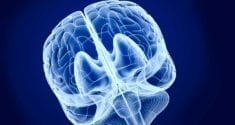Headaches such as migraine are a leading cause of morbidity worldwide, but most treatments provide only partial relief. While scientists know that migraines and related headaches are caused by activity in a part of the nervous system known as the trigeminal ganglion (TG), it remains unclear which genes and cell types of the TG are involved. By analyzing human and mouse TG, researchers at Brigham and Women’s Hospital and Massachusetts General Hospital profiled, at single cell resolution, the genes expressed in each TG cell type. The research, published in Neuron, may allow scientists to design more effective pain treatments by targeting specific genes and cells.
Gene Atlas Aims to Help Develop Better Pain Relievers for Migraine
Despite strong efficacy in animal models, only very few pain medications have made it into the clinic. The researchers’ goal was therefore to analyze human tissue to look for new targets for treating headaches and facial pain. By mapping the cell types and genes expressed in the human and mouse trigeminal ganglion, researchers have created an online resource to study the molecular basis of headache and facial pain. This atlas of genes expressed in each of the cell types in the TG, the main relay center for migraine and facial pain, helps to identify potential therapeutic targets that are selectively expressed in cells that cause headache. Experts believe this will lead to more precise drugs without the many side effects.

In addition to analyzing TG from four human donors, the researchers examined two headache mouse models. Importantly, they found that while cell types are largely conserved between mice and humans, some of the genes known to be involved in pain are expressed in different subsets of cells in mice compared to humans. This gave the researchers new ideas about which cells to study further.
The information from the researchers’ atlas, which is publicly available online, could inspire new investigations into the molecular basis of different types of pain, such as toothache. It may also shed light on how to treat headaches beyond migraines, including post-concussion headaches or cluster headaches. In the future, the researchers plan to improve the current atlas by sequencing additional human tissue. They hope the atlas can help researchers to design more selective pain therapeutics by targeting the specific cells they have identified through gene therapies.
Migraine Painkillers in the Fight Against Obesity
To effectively treat a nagging headache, triptans are often deferred. This class of migraine drugs could also be useful in treating obesity, a study by scientists at UT Southwestern suggests. In studies with obese mice, a daily dose of a triptan caused the animals to eat less and lose weight over the course of a month.
Obesity has become an epidemic in the western world. Poor diet and lack of exercise lead to obesity over time, which in turn increases the risk of heart disease, stroke, diabetes and certain types of cancer. Most treatments for obesity focus on eating habits and physical activity. Scientists have long known that serotonin, a chemical messenger found throughout the brain and body, plays a key role in appetite. However, there are 15 different serotonin receptors, molecules that sense serotonin and signal cells to change their behavior in response. Researchers have struggled to understand each serotonin receptor’s role in appetite. Triptans, used to treat acute migraines and cluster headaches, work by targeting another receptor, the serotonin 1B receptor (Htr1b), which had previously not been well studied in relation to appetite and weight loss.
Neurons that Play a Role in Appetite
For the study, researchers tested six prescription triptans on obese mice fed a high-fat diet for seven weeks. Mice fed two of these drugs ate about the same amount, but mice fed the other four supplements ate less. After 24 days, mice given a daily dose of the drug frovatriptan lost an average of 3.6% of their body weight, while mice not given a triptan gained an average of 5.1% of their body weight. The researchers found that these drugs, one in particular, can reduce body weight and improve glucose metabolism in less than a month.
To determine exactly how frovatriptan affects food intake and weight, the researchers engineered mice to lack either Htr1b or Htr2c, the serotonin receptor targeted by fen-phen and lorcaserin. In mice lacking Htr1b, frovatriptan was no longer able to reduce appetite or cause weight loss, while stopping Htr2c had no effect. This confirmed that the drug worked by targeting the serotonin 1B receptor. According to the researchers, this finding could be important for drug development and for the treatment of obesity. The team went on to show exactly which neurons in the brain are most important for Htr1b’s role in mediating appetite by focusing on a small subset of cells in the brain’s hypothalamus.




